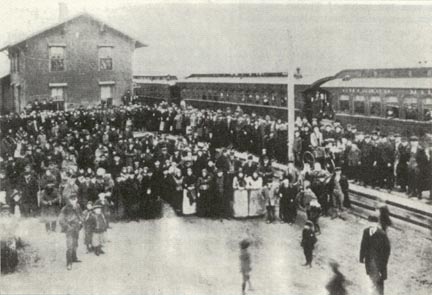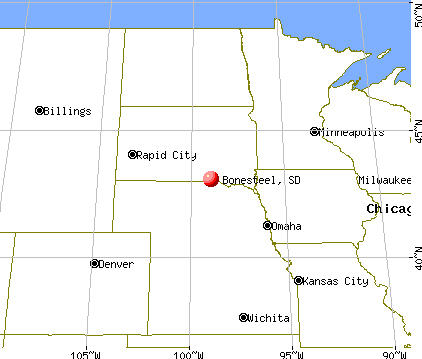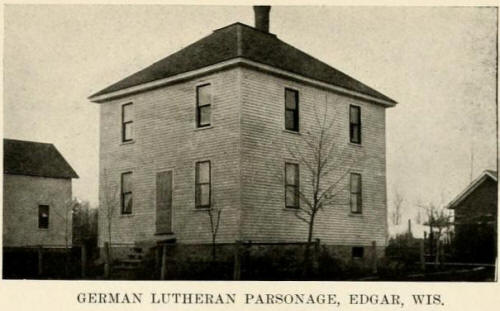Today, I'd like to attempt to make a list of churches which could be attended by the Schochenmaiers.
I am afraid to make some mistakes because those of you who are still living there where the "first" Schochenmaiers had lived in the U.S. and Canada respectively can be aware of real history of your families. So, I am thankful in advance for all improving comments and explaining information.
Let's get started. As I don't know about every moving into various places around New World, the easiest way for me is to follow the "first" Schochenmaiers where they got children (birth places) and where they were registred (national and state census).
Michael Schochenmaier (1859-1937)
In October 1887 Michael had immigrated to the United States through Maryland (Baltimore). He was 27 years old. Three months later his son Fred (1888-1950) was born in Alexandria (Hanson county, South Dakota). He was Michael's third child (after Kathy and Mina born in Russia in 1884 and 1885 respectively).
As you can read, it was the very beginning of the town. It's pretty small (615 inhabitants). I didn't find any pictures of the churches except one which was abandoned:
Who knows, maybe Micheal's family attended it.
Two years later, in the summer of 1890, the second son of Michael - Jacob (1890-1971) was born in Eureka, McPherson County, South Dakota. It's bigger (about 800 people).
Seven coaches of German-Russian emigrants arrive in Eureka, SD., 1892.:

Eureka is well-known in the Russian-German world:

From Eureka I can post more pictures of the local churches:
1. Methodists
Reformed
Zion Lutherans
Painting from the past of Eureka:
Women with head-scarts, Eureka, S.D., 1937. Following an old church tradition, women sat on "their" side during the service:

Five years after that Christina (1895-1916) was born either in Milton (Rock County) or Cassel (Marathon County) Wisconsin. Actually, I don't understand that change! From South Dakota to Wisconsin? What for?

But there is a document that in 1899 the Schochenmaiers family got back to South Dakota. In 1900 they took part in the 12th Census according to which there were living in the Gregory County where there are Bonesteel and Burke.

I've found only four churches in Bonesteel: Immaculate Conception Catholic Church, Ponca Creek United Church of Christ, Zion Lutheran Church and St. Andrew's Church (Episcopal).
Here is solely the picture of Episcopal Church:
It's a bit strange, I didn't find any other photos on the Net(((
The 13th Census states that the Michael's family had already lived in Fairfax in 1910, so to say their last residence place.
Here are some pictures from the present and past of the town:
There are actually three churches: Hope Congregational United Church of Christ, St. Anthony Catholic Church, and Trinity Lutheran Church. Online there is a Facebook community of the latter one:
Well, next time I will try to collect pictures of the Churches whereto could have gone the members of the Jacob's family.
P.S. I suggest you, my dear remote relatives from the U.S., have got much more information than me, so do not hesitate to improve and precise. I need your help!!! Thank you in advance)))
I am afraid to make some mistakes because those of you who are still living there where the "first" Schochenmaiers had lived in the U.S. and Canada respectively can be aware of real history of your families. So, I am thankful in advance for all improving comments and explaining information.
Let's get started. As I don't know about every moving into various places around New World, the easiest way for me is to follow the "first" Schochenmaiers where they got children (birth places) and where they were registred (national and state census).
Michael Schochenmaier (1859-1937)
In October 1887 Michael had immigrated to the United States through Maryland (Baltimore). He was 27 years old. Three months later his son Fred (1888-1950) was born in Alexandria (Hanson county, South Dakota). He was Michael's third child (after Kathy and Mina born in Russia in 1884 and 1885 respectively).
In 1879, the community was founded with the name Clarksville. Its post office was established in 1880, and the city later incorporated in 1885 as Alexandria. The city was named after Alexander Mitchell.
As you can read, it was the very beginning of the town. It's pretty small (615 inhabitants). I didn't find any pictures of the churches except one which was abandoned:
Who knows, maybe Micheal's family attended it.
Two years later, in the summer of 1890, the second son of Michael - Jacob (1890-1971) was born in Eureka, McPherson County, South Dakota. It's bigger (about 800 people).
Eureka was laid out in 1887, and named "Eureka" a Greek exclamation meaning "I have found it!"
Seven coaches of German-Russian emigrants arrive in Eureka, SD., 1892.:

Eureka is well-known in the Russian-German world:
The town of Eureka, South Dakota, became very important, where thousands of German-Russian immigrants arrived by train from New York City. The Agricultural Experiment Station publication at South Dakota State University states: "For 15 years, from 1887 to 1902, this `end of the track' town was the largest primary wheat market in the world, claim historians. In 1897 alone, two thirds of the world's wheat crop entering the commercial market was shipped from Eureka."

From Eureka I can post more pictures of the local churches:
1. Methodists
Zion Lutherans
Painting from the past of Eureka:
Women with head-scarts, Eureka, S.D., 1937. Following an old church tradition, women sat on "their" side during the service:

Five years after that Christina (1895-1916) was born either in Milton (Rock County) or Cassel (Marathon County) Wisconsin. Actually, I don't understand that change! From South Dakota to Wisconsin? What for?

The German Evangelical Lutheran St. Stephen's Church — The congregation was organized in 1893 and the edifice erected in 1894, and religious service was conducted by Rev. P. Karl Schmalz until the year 1910, when the congregation felt strong enough to call for a resident minister; the congregation has grown to a membership of fifty families and it is still served by Reverend Schmalz, the resident minister of the town of Wien.
But there is a document that in 1899 the Schochenmaiers family got back to South Dakota. In 1900 they took part in the 12th Census according to which there were living in the Gregory County where there are Bonesteel and Burke.
The county was created in 1862 and organized in 1898.

I've found only four churches in Bonesteel: Immaculate Conception Catholic Church, Ponca Creek United Church of Christ, Zion Lutheran Church and St. Andrew's Church (Episcopal).
Here is solely the picture of Episcopal Church:
It's a bit strange, I didn't find any other photos on the Net(((
The 13th Census states that the Michael's family had already lived in Fairfax in 1910, so to say their last residence place.
The first settlement at Fairfax was made around 1890. A post office called Fairfax has been in operation since 1892. It was named after Fairfax, Virginia, the former hometown of an early settler. The number of inhabitants is 115 (63 households, and 33 families residing in the town).
Here are some pictures from the present and past of the town:
There are actually three churches: Hope Congregational United Church of Christ, St. Anthony Catholic Church, and Trinity Lutheran Church. Online there is a Facebook community of the latter one:
Well, next time I will try to collect pictures of the Churches whereto could have gone the members of the Jacob's family.
P.S. I suggest you, my dear remote relatives from the U.S., have got much more information than me, so do not hesitate to improve and precise. I need your help!!! Thank you in advance)))















